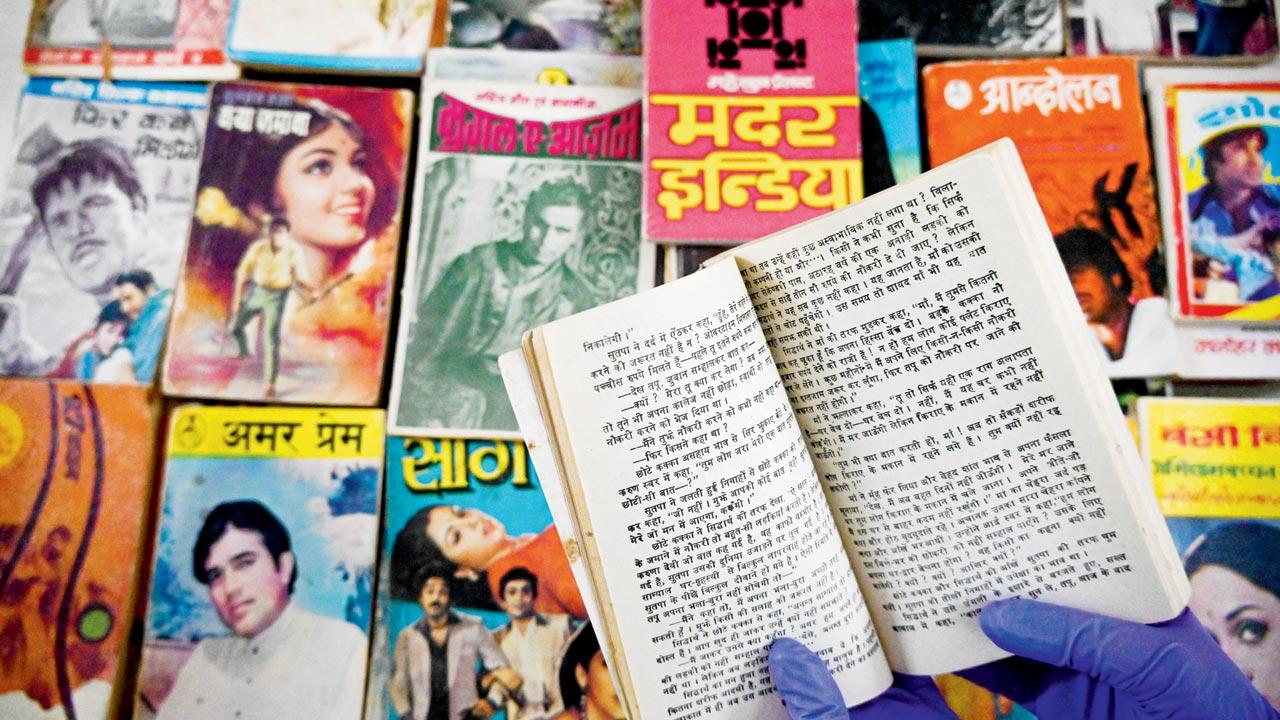Indian film buff Tamaki Matsuoka has been a fan of the country’s dramatic movies and musicals for decades. We caught up with her to discuss her love for Sholay, single-screen theatres, and her favourite dialogue

Tamaki Matsuoka, an avid cinephile, has been promoting Indian films in Japan since the 1980s. Pic/Anurag Ahire
Tamaki Matsuoka is not your regular cinephile. Dressed in a bright parrot-green saree and equipped with her trusty Olympus camera on hand, which she says is her constant companion to take pictures for her blog, the film-loving Japanese citizen is in the city to catch movies at heritage theatres—a ritual she has cultivated and has been following since 1975. “I’ve been to India more than 50 times now,” she smiles.
ADVERTISEMENT
It was in college that Matsuoka started learning Hindi. When she joined the Osaka University of Foreign Studies (OUFS) in 1967, the professor brought two newspapers and asked them to choose which language to study—one was a Hindi newspaper, and the other was an Urdu one. Matsuoka gravitated towards Hindi because it looked easier, and the rest, as they say, is history.
Her interest in Indian culture was spurred by the stories of Premchand, which her professor made them read. But it was while she was doing her MA in Hindi literature at the Tokyo University of Foreign Studies (TUFS) in 1971 that she came across the world of Indian cinema. “A professor told me, ‘You write and read Hindi well, but speaking and hearing—bilkul accha nahi hai’,” she recalls. “He advised me to go to a theatre and watch a Hindi film—the Embassy of India used to show Hindi films once a year for Indian people living in Japan—and that’s when I watched the 1970 film, Khilona.” Sanjeev Kumar’s acting floored her, as did the dance and drama and overall grandiosity of Hindi films. “Sanjeev Kumar’s acting was superb!”
 Matsuoka has amassed a collection of over 200 songbooks, scripts, and promotional items
Matsuoka has amassed a collection of over 200 songbooks, scripts, and promotional items
Matsuoka opted to drop out from the course and started working in the Institute for the Study of Languages and Cultures of Asia and Africa (ILCAA), a research affiliate of the TUFS. In December of 1975, she came to Mumbai for the first time to see a film on the silver screen—the 1956 film Jagte Raho, starring Raj Kapoor and Sulochana Chatterjee. “It was at Liberty Cinema, and it was an interesting movie,” she reminisces. Post her Mumbai trip, she went to Delhi, where she watched six films, including Phool Aur Patthar (1966), Khamoshi (1969), Haathi Mere Saathi (1971), Zanjeer (1973), Geet Gata Chal (1975), and Sholay (1975), which is her favourite till date. “I got the chance to interview my favourite actor, Amitabh Bachchan, in 1980. We talked in Hindi,” she reminisces.
During her trips to India, she amassed a large collection of over 200 songbooks, scripts, and promotional booklets, that used to be sold outside theatres back in the day. 145 of these have been donated to the Film Heritage Foundation (FHF).
She organises screenings of Hindi films and holds film festivals, as a researcher of Indian films. The first Indian Film Festival was held in 1983; G. Aravindan’s 1978 Malayalam film Thampu, Shyam Benegal’s 1974 film Ankur, and Bhim Sain’s Gharaonda (1977) were among the films shown in Tokyo and in theatres around Japan. Today, she says, the success of Tamil and Telugu films like Bahubali (2015) and RRR (2022) have sparked interest in audiences for South Indian films. Previously, Satyajit Ray films were known and loved.
“We handed a flyer to the audience before the beginning of the film, saying, ‘Please don’t worry about laughing, crying, or clapping—just enjoy the film’,” she laughs, referring to the differences in Japanese and Indian film-watching culture. While watching films is an engaging, interactive experience for Indians, Japanese audiences sit in silence. Currently, she’s working on collecting theatre seating layouts, after aspiring to learn more about how the experience of watching a film impacts its success.
Aapka favourite dialogue kaunsa hai? We ask. “Acha to hum chalti hai,” she sings, referencing the Kishore Kumar and Lata Mangeshkar song from the film Aan Milo Sajna (1970). “I started to use that as a goodbye greeting.”
 Subscribe today by clicking the link and stay updated with the latest news!" Click here!
Subscribe today by clicking the link and stay updated with the latest news!" Click here!







